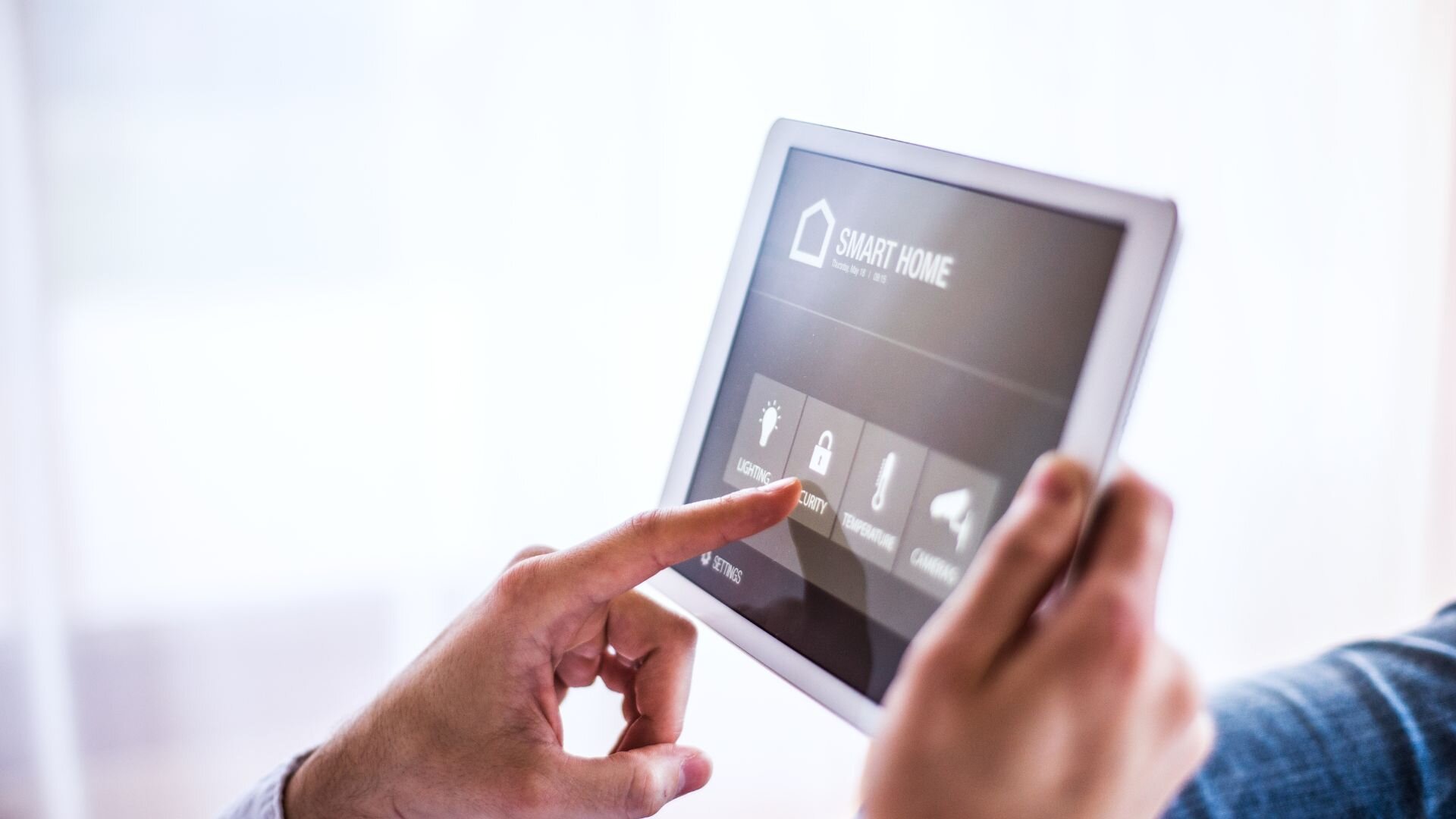Did you know that lighting accounts for around 10% of the average household electricity budget in Australia? This percentage can surge even higher for some homes during the darker months, as lights remain on longer to combat early sunsets. With energy costs steadily climbing, Australians feel the pinch and search for ways to curb their electricity bills without compromising comfort. Enter smart lighting systems—an innovation that promises to lower energy consumption and enhance convenience.
At Enersol, our Residential Electrician Gold Coast - Smart lighting systems offer a contemporary way to tackle rising energy costs, combining technology with everyday usability. Unlike the manual on-and-off switch of traditional lights, smart lighting lets you control brightness based on your current needs. You can do this through automated schedules, motion detectors, or even smartphone apps, making it easy to decide how and when your lights are used.
Smart lighting provides the right amount of illumination exactly where you need it, cutting down on wasted energy and noticeably reducing electricity bills. Learn more about residential wiring guide. It also fits neatly with the trend toward sustainable living. In this article, we’ll explore the environmental and financial perks of smart lighting, highlighting how this technology could revolutionise your home and lighten your financial load.
What Are Smart Lighting Systems?
Smart lighting systems are rapidly becoming an essential feature of modern homes. They offer a combination of convenience, technology, and energy efficiency. These systems consist of several key components: smart bulbs, dimmers, motion sensors, and app-based controls. Each of these elements works together to create an intelligent lighting environment that adapts to your lifestyle.

Smart lighting systems use cutting-edge technologies like Wi-Fi, Bluetooth, and Zigbee protocols, which allow devices to communicate seamlessly. These technologies connect smart lights with other home gadgets, forming an integrated system that boosts energy efficiency. With voice controls like Alexa and Google Assistant, managing your lights becomes as easy as speaking a command, giving you hands-free control.
Unlike traditional incandescent bulbs, smart lighting adapts to user preferences, schedules, and external factors like natural daylight availability. For instance, smart bulbs can adjust their brightness based on ambient light levels, ensuring optimal illumination without unnecessary energy consumption. Additionally, smart lighting systems can integrate with other smart home technologies, such as smart thermostats and smart home security systems, providing a unified solution for energy management and home automation.
The difference between smart lighting and traditional lighting lies in its automated features, controllability, and energy-monitoring capabilities. Smart lighting systems provide substantial energy savings by optimising energy consumption and reducing energy waste, making them an ideal choice for any energy-efficient home.
The Energy Efficiency Benefits of Smart Lighting
Smart lighting systems help households become more energy-efficient in several key ways:
Dynamic Brightness Control
Smart bulbs can adjust their brightness based on natural light availability in the room, ensuring energy is only used when necessary. This prevents over-lighting and reduces energy consumption, leading to substantial energy savingsSmartrt lighting systems can optimise energy consumption and save ener by measuring ambient light levelsgy, ultimately reducing energy costs.
Motion-Activated Lighting
Motion sensors play a significant role in reducing energy consumption. Smart lighting systems equipped with motion sensors can turn lights on only when someone enters a room and switch them off automatically when the space is unoccupied. This ensures no energy is wasted in unused areas, resulting in cost savings and a reduction in overall energy consumption.
Energy Monitoring and Insights
Smart lighting systems provide users with real-time monitoring of their energy usage patterns. By offering insights into energy consumption habits, homeowners can make informed decisions to improve energy efficiency and reduce unnecessary energy consumption. These energy management systems help in optimising energy usage, leading to potential energy savings and a more energy-efficient home.
Remote Management
Smart lighting technology allows homeowners to control their lighting system through mobile apps, even when they’re away from home. This feature eliminates the need for lights to remain on unnecessarily, reducing energy use and enhancing energy efficiency. Remote control capabilities also provide convenience and ensure that energy usage is aligned with actual needs.
Many smart home devices, such as smart thermostats, solar panels, and smart home security systems, can integrate with smart lighting systems to create a comprehensive energy management system. This integration not only helps save energy but also contributes to a sustainable future by reducing greenhouse gas emissions and the carbon footprint of residential properties. For large homes or families with varying schedules, smart home systems can provide substantial energy savings by automating lighting and reducing energy costs.
Smart lighting systems are not just limited to residential properties; they are also becoming popular in commercial buildings where energy efficient solutions are crucial for reducing utility bills. By leveraging smart technology and smart home tech, both residential and commercial properties can benefit from energy efficient lighting and automation systems that optimise energy usage.
The initial investment in smart lighting may be higher compared to traditional incandescent bulbs, but the long-term cost savings and energy efficiency benefits make it a worthwhile choice for those looking to enhance their smart home energy efficiency.
Smart lighting systems are a key component of modern smart home systems, offering energy-efficient appliances and lighting fixtures that contribute to an energy-efficient home. With the integration of renewable energy sources and smart home technologies, smart lighting plays a significant role in reducing energy bills and promoting a more sustainable lifestyle.
Smart Lighting and Environmental Sustainability
Smart lighting systems contribute significantly to a greener environment and sustainable living.
LED Technology
LED lighting is a core element of smart lighting systems, consuming up to 75% less energy than traditional incandescent or halogen bulbs. LED bulbs are also known for their longer lifespan, which reduces waste from frequent replacements. By using LED lighting, households can reduce energy consumption and improve energy efficiency while supporting sustainability efforts.
Reduced Energy Waste
The automated features of smart lighting, such as daylight sensors and timers, ensure that energy is only used when needed. By measuring ambient light levels, these systems can optimise energy usage, reducing overall electricity consumption and saving energy. This approach helps minimise unnecessary energy use, contributing to a more energy-efficient lighting system.
Lower Carbon Footprint
Reducing energy consumption directly translates to lower carbon emissions, which is crucial for combating climate change. By using smart lighting systems, homeowners can contribute to Australia’s initiatives to achieve net-zero emissions and reduce greenhouse gas emissions. Adopting smart lighting is an actionable step toward a more sustainable future, helping to reduce the overall carbon footprint and enhance energy efficiency.
Financial Savings With Smart Lighting
Smart lighting systems offer several financial advantages that make them an appealing investment for homeowners.
Potential Savings
Switching to smart lighting can reduce energy bills by up to 75%, depending on usage habits and system efficiency. By reducing energy consumption and optimising energy usage, smart lighting systems provide significant energy savings, lowering utility bills and making energy-efficient lighting an affordable solution for many households.
Longevity of Smart Bulbs
Smart bulbs, especially LED lighting, have a much longer lifespan compared to traditional incandescent bulbs. This means that homeowners save on replacement costs over time, making smart lighting a cost-effective solution. The reduced need for frequent replacements also aligns with energy-efficient and sustainable living goals.
Cost-Effective Features
Features like dimming and motion detection further contribute to financial savings. In high-traffic areas such as kitchens or living rooms, smart lighting systems equipped with motion sensors can reduce energy consumption by ensuring that lights are only on when needed. Dimming capabilities also allow users to adjust the lighting system to match ambient light levels, saving energy and reducing overall energy costs.
Smart home technology, including smart thermostats and home automation systems, can work alongside smart lighting to create an efficient home automation setup. By controlling lighting, heating and cooling, and even air conditioning through a unified smart home system, homeowners can optimise energy usage and achieve substantial cost savings on their utility bills. Smart devices and smart home tech offer an effective way to manage energy use and promote a more energy-efficient home.
How to Transition to Smart Lighting
Transitioning to a smart lighting system can be a straightforward process with the right guidance.

Assess Current Lighting Needs
Begin by taking stock of your current lighting needs. Figure out where and how often lights are used in your home. Areas like the kitchen, living room, and garden are great starting points for smart lighting. Once you get a handle on your lighting habits, you can choose the best way to boost energy efficiency and save some cash.
Choose the Right Smart Lighting System
Selecting the right smart lighting system is crucial to meet your specific needs. Consider factors like budget, compatibility with existing smart devices, and integration with platforms such as Google Home or Amazon Alexa. Ensure that the smart lighting system you choose aligns with your home automation goals and is compatible with other smart home technologies you may already have in place.
DIY vs. Professional Installation
While some smart lighting systems are easy to install yourself, others may require professional installation to ensure they integrate seamlessly with existing electrical systems. If you’re not comfortable handling electrical components, it’s best to consult a professional to avoid potential issues and ensure optimal functionality.
Set Up Automation
Once your smart lighting system is installed, experiment with automation features. Set up schedules to have lights turn on at sunset or adjust brightness levels based on the time of day. Automation helps optimise energy usage, providing both convenience and energy-saving benefits. By measuring ambient light levels, smart lighting can adjust dynamically to reduce unnecessary energy use.
Consulting with professionals can also help guide you in selecting and setting up the right smart lighting system for your home, ensuring you maximise the energy-saving and convenience benefits of smart technology.
Overcoming Common Concerns About Smart Lighting
Addressing common concerns about smart lighting can help ease the transition for homeowners.
Cost Concerns
While the initial investment in a smart lighting system may seem high, the long-term energy savings on utility bills make it worthwhile. Smart bulbs’ energy-efficient benefits and reduced replacement costs provide substantial cost savings over time.
Complexity of Use
Many homeowners worry that smart lighting systems are difficult to use. In reality, most systems are designed to be user-friendly, with intuitive apps and voice control options. Smart home technology has advanced significantly, ensuring that even those new to smart devices can easily manage their lighting system.
Privacy and Security Issues
Privacy and security are valid concerns when it comes to smart home technology. Reputable smart lighting brands implement robust data protection measures, ensuring user privacy and the security of the home automation systems.
Compatibility Issues
Compatibility is another common concern. Fortunately, most smart lighting solutions are designed to work seamlessly with existing electrical setups and other smart home devices. This ensures that your smart lighting system integrates smoothly with your current smart home system, supporting energy-efficient lighting and reducing energy consumption.
Addressing these concerns can help homeowners feel more confident about adopting smart lighting technology, which will ultimately enhance energy efficiency and reduce heating and cooling costs.
Smart Lighting for a Smarter Home: Partner With Enersol Electrical
Transform your home with the trusted expertise of Enersol Electrical. Our team specialises in providing tailored smart lighting solutions that enhance both energy efficiency and home aesthetics. From consultation to installation, Enersol Electrical is committed to delivering high-quality services that ensure a seamless transition to a smart lighting system.
With extensive experience in working with leading smart lighting brands and systems, Enersol Electrical can cater to diverse customer needs and budgets, ensuring compatibility with your existing smart home devices and home automation systems. Our General Lighting services are designed to help you embrace the future of smart home technology.
Transform your home into an energy-efficient haven with Enersol Electrical. Contact us today for expert advice and professional installation services tailored to your needs.